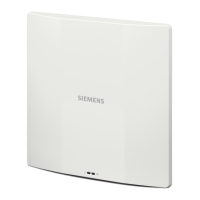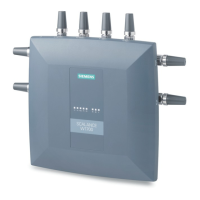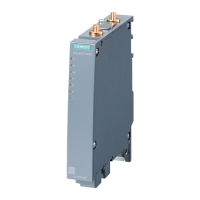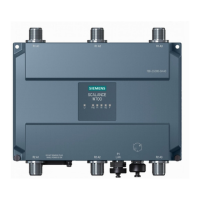Adaptive Radio Management
21.2 Configuring ARM Features on an AP
SCALANCE W1750D UI
Configuration Manual, 02/2018, C79000-G8976-C451-02
345
When the client match feature is enabled on an AP, the AP measures the RF health of its
associated clients. In the current release, the client match feature is supported only within an
AP cluster. If any of the following trigger conditions is met, clients are moved from one AP to
another for better performance and client experience:
● Dynamic Load Balancing—Client match balances clients across APs on different
channels, based on the client load on the APs and the signal to noise ration (SNR) levels
the client detects from an underutilized AP. If an AP radio can support additional clients,
the AP will participate in client match load balancing and clients can be directed to that
AP radio, subject to the predefined SNR thresholds. For better load balancing, clients are
steered from busy channels to idle channels.
● Sticky Clients—The client match feature also helps mobile clients that tend to stay
associated to an AP despite low signal levels. APs using client match continually monitor
the client's RSSI as the client roams between APs, and move the client to an AP when a
better radio match can be found. This prevents mobile clients from remaining associated
to the APs with less than ideal RSSI, which can cause poor connectivity and reduce
performance for other clients associated with that AP.
● Band Steering—APs using the client match feature monitor the RSSI for clients that
advertise a dual-band capability. If a client is currently associated to a 2.4 GHz radio and
the AP detects that the client has a good RSSI from the 5 GHz radio, the AP steers the
client to the 5 GHz radio, as long as the 5 GHz RSSI is not significantly worse than the
2.4 GHz RSSI, and the AP retains a suitable distribution of clients on each of its radios.
● Channel Utilization—Based on the percentage of channel utilization, clients are steered
from a busy channel to an idle channel.
● Client Capability Match—Based on the client capability match, clients are steered to
appropriate channel, for example, HT20, HT40, or VHT80.
Note
The spectrum load balancing is
integrated with the client match feature. Client match allows
the APs in a cluster to be divided into several logical AP RF neighborhood called domains,
which share the same clients. The VC determines the distribution of clients and balances
client load ac
ross channels, regardless of whether the AP is responding to the probe
requests of wireless clients.
You can configure client match parameters in the SCALANCE W UI or the CLI. When client
match is enabled, the dashboard in the main window displays the
link on
selecting an AP in the
tab or a client in the
tab. Clicking this link
provides a graphical representation of radio map view of an AP and the client distribution on
an AP radio. For more information, see
Client Match (Page 72).

